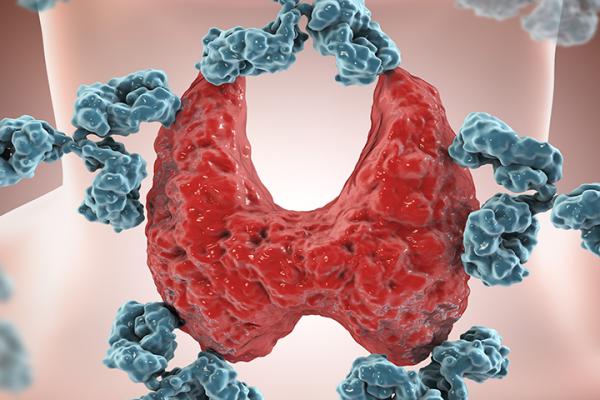Professor Joëlle Rüegg is breaking new ground in a quest to learn more about how everyday chemicals can impair brain development in people, including infants, by interfering with their hormones.An expert in environmental toxicology at Uppsala University in Sweden, Rüegg leads a research project that received EU funding to examine the impact of such substances on neurodevelopment. They’re known as endocrine-disrupting chemicals, or EDCs, and can have the biggest effects on unborn babies and children.Sensitive systemThe endocrine system sends out hormones, which activate “pathways” that deliver important signals to different types of cells. These signals help control growth, metabolism and even mood – and disruptions can have serious consequences.Evidence over the years has pointed to a connection between EDCs and, for example, autism, hyperactivity and lower IQ, according to Rüegg. While many of the mechanisms underlying this link are still unknown, her project has started to shed some light on them.‘We were able to connect certain signalling pathways to processes that are important for brain development,’ said Rüegg. ‘These hormonal pathways have not been identified previously as targets of these chemicals.’EDCs are present in items ranging from toys and plastic containers to cosmetics and pesticides. Such chemicals include dioxins, bisphenols and phthalates and can be absorbed through contact with the air or water, through the skin or from food.‘We’re constantly exposed to hundreds of chemicals that have these endocrine-disrupting properties,’ said Rüegg. ‘They affect a system – namely, the hormonal system – that’s sensitive to very small signals.’Neural impactsCalledENDpoiNTs, the project that she runs began in January 2019 and continues through June 2024. It belongs to a cluster – namedEURION– of eight EU-funded research initiatives to improve the identification of endocrine disruptors.“The more we understand how EDCs work, the better we can design test methods.Professor Joëlle Rüegg, ENDpoiNTsRüegg, originally from Switzerland, became interested in the connection between EDCs and the developing brain after doing a PhD in Munich, Germany on links between stress hormones and depressive disorders.In cellular and molecular studies, her team found six hormonal pathways not previously known to be linked to negative effects on neurodevelopment, adding to three known ones.The team also observed differences between males and females, with some pathways affected in one sex but not the other.Rüegg said evidence suggests that this factor may lead to variances in things like memory function.Early actionBetter knowledge about EDCs and their potential effects will also allow for more targeted regulation of certain chemicals by the EU and other authorities to prevent damage before it is done, according to Rüegg.While the EU has among the strictest chemical laws in the world, they continue to evolve as new potential risks come to light. In 2023, for example,new European rulesto identify endocrine disruptors entered into force.‘The more we understand how EDCs work, the better we can design test methods,’ she said. ‘It’s best if you can say from the start that this chemical may affect brain development. Proactively, we want to avoid the situation where we see effects in the human population.’On the basis of its findings, the ENDpoiNTs team has developed testing and screening tools to predict whether chemicals will have an effect on neurodevelopment.This could make it easier to pinpoint substances that should be excluded from commercial goods.‘The idea is to help as early as possible in a production process to identify these flags,’ Rüegg said.Environmental huntThe EU is also funding research to measure concentrations of EDCs in the environment more effectively.That’s the aim of a project that runs for three years through 2025. CalledGREENER, it’s developing environmentally friendly sensors to gauge EDCs in water.“We want to be able to measure concentrations directly on-site.Dr Martin Möbius, GREENERWhile some devices can detect low levels of EDCs, the process can be time-consuming and costly because samples often need to be taken to laboratories for testing, according to Dr Martin Möbius, a researcher in photonics at the Center for Microtechnologies at Chemnitz University of Technology in Germany.‘A lot of steps are necessary to define these concentrations,’ said Möbius, who leads GREENER. ‘Our idea is that we want to be able to measure concentrations directly on-site.’The project team will develop a spectrometer – a device that identifies substances by measuring how much they absorb different wavelengths of light. Quantum-dot crystals – tiny semiconductors – will allow measurements at short wavelengths.The plan is to have a working model ready by the end of 2025.Handy sensorsThis kind of sensor could be useful in fisheries because EDCs can alter the physiology of fish and affect their sexual development and function. People in the industry could use the spectrometer to learn whether local fish populations are exposed to EDCs.Similarly, the technology could be deployed in wastewater treatment to remove harmful materials.GREENER intends to make its sensor easy to use for non-experts and compact – about the size of a bread tin.‘When you have a small device, you can, for example, install it on a pipe where you have wastewater or drinking water and see what’s inside,’ Möbius said.In general, portable devices like GREENER’s planned spectrometer have the potential to provide a more detailed picture of the presence and levels of EDCs in various bodies of water across a wide geographical area.‘We know some of the effects of these chemicals, but we don’t know the concentrations and where they all are,’ Möbius said. ‘This is what we have to find out to protect the environment.’Research in this article was funded by the EU’s Horizon Programme. The views of the interviewees don’t necessarily reflect those of the European Commission. If you liked this article, please consider sharing it on social media.Watch the video
This article was originally published in Horizon, the EU Research and Innovation magazine.
Add to favorites:
Favorite
Share:
Brain-harming chemicals seen in clearer light with fresh findings
Listing Description
Documents
No documents available.
Ask KETMarket to make a contact
Connect with the Listing Owner!
💬 Please log in now to askKETMarket to make a contact. Not a member yet? Sign up for free and start connecting today!
Video
Related Funding and Finance Opportunities
Unlock Exclusive Funding Opportunities!
🔑 Get instant access to tailored funding opportunities that perfectly match your needs. This powerful feature is exclusively available to our premium members—helping you save time, stay ahead of the competition, and secure the right funding faster.
Upgrade to Premium now and never miss an important opportunity again! Already a premium member? Log in here to explore your matches.
Related Innovation Offers
Discover Tailored Innovation Offers!
🚀 Gain access to technology solutions that match your specific needs and interests—carefully selected to support your innovation goals. These offers are exclusive to our premium members, helping you identify relevant technologies faster and start the right conversations with potential partners.
Upgrade to Premium and explore your personalized technology matches today!
Already a premium member? Log in here to view your tailored offers.
Discover Tailored Innovation Offers!
🚀 Gain access to technology solutions that match your specific needs and interests—carefully selected to support your innovation goals. These offers are exclusively available to our premium members, helping you identify relevant technologies faster and start the right conversations with potential partners.
Upgrade to Premium now and explore your personalized technology matches today! Already a premium member? Log in here to view your tailored offers.
🚀 Gain access to technology solutions that match your specific needs and interests—carefully selected to support your innovation goals. These offers are exclusively available to our premium members, helping you identify relevant technologies faster and start the right conversations with potential partners.
Upgrade to Premium now and explore your personalized technology matches today! Already a premium member? Log in here to view your tailored offers.

